- Home
- Paul Doherty
Isabella and the Strange Death of Edward II Page 5
Isabella and the Strange Death of Edward II Read online
Page 5
Nevertheless, Edward II had sown the seeds for his later betrayal. Stubborn as ever, he attacked those who opposed his favourite and the easiest targets were the weakest. The Manor of Hailes, as well as Berkhamsted Castle, which belonged to Isabella’s aunt, the Dowager Queen Margaret, were taken from her and given to Gaveston. Isabella herself was treated even more harshly. No dower lands were given to her, and there is no record of Isabella receiving even petty sums to set up and run her own independent household. Until July 1308, Isabella had to accompany Edward to royal palaces and manors at Westminster, Reading, Wallingford and Windsor. Nor was she given any patronage, such as the right to promote clerks or priests; nothing is recorded, except for three criminals receiving pardon ‘at the Queen’s insistence’.35 Philip IV grew concerned. Why had lands not been granted to his daughter? Edward replied evasively he would love to do so but his Council was preventing it.36
Finally, Philip decided to intervene. An autocrat himself, he was reluctant to support rebels against any king, but the treatment of his daughter and sister were the final straw. Two anonymous newsletters of May 1308 mentioned how Philip had sent envoys to England to proclaim his hostility to Gaveston and that anyone who supported the royal favourite was now France’s mortal enemy. Philip also despatched monies to encourage the English opposition.37 Young Isabella was drawn into this too. Two months earlier Philip had sent a secret agent, a trained clerk, Ralph de Rosseleti, to England to carry Isabella’s privy seal.38 This trusted French clerk now took over the despatch of Isabella’s letters and any sent to her. She was now her father’s principal point of contact with the rebel barons in England.
Edward then conceded defeat, at least to create a breathing space. If he continued to support Gaveston, he would not only face war in the north against Robert the Bruce but uprisings throughout England led by his leading earls and supported by French troops. So Edward changed tack. Gaveston was honourably exiled to be Edward’s Regent in Ireland, while the English King worked furiously to detach the French court from his baronial opponents. This opposition was now making itself felt in every walk of life. For example, in the late spring of 1308 the monks of Westminster were bitterly divided over the appointment of their new abbot, Kedyngton, a protégé of Gaveston. His opponents, led by Roger de Aldenhan, urged his colleagues to petition Queen Isabella, who would do anything to hinder Gaveston’s nominee because of her hatred for him.39
Once Gaveston had left, Edward desperately tried to bring such partisan policies to an end. Isabella was immediately given certain estates in the French counties of Ponthieu and Montreuil as a sweetener. She did not attend Gaveston’s departure from Bristol on 25 June 1308; instead, she waited for her husband at Kings Langley before travelling on to Windsor to console him on the loss of his favourite. The new Queen now began to be treated with increasing honour. She attended a Parliament at Northampton in August and afterwards entertained the nobility with a great banquet at Westminster.40 Edward now hoped, through his wife and dowager aunt, to win Philip’s approval. Bishop Langton, whom Margaret had defended, was released,41 whilst property given to Gaveston was restored to her. Even greater generosity was shown to Isabella: huge grants of money were issued from the Exchequer and she received the ownership of manors in England and Wales and the right to appoint priests and clerks to benefices. Moreover, Isabella was now constantly in Edward’s company. Hardly surprisingly, Philip withdrew his opposition to Gaveston who, in 1309, rejoined the King.42
Over the next two years, 1309–11, Isabella was the King’s constant companion and supporter, so much so that the baronial opposition led by Thomas of Lancaster regarded her as Gaveston’s ally. She even sheltered the favourite’s supporters in her household. The barons demanded their removal, especially Henry Beaumont and his sister Isabella de Vescy, who’d become the Queen’s regular companion. The barons had their way but Isabella refused to give up the friendship, writing constantly to de Vescy and sending her delicacies of wild boar meat and cheese.43
By the end of 1311 Isabella was still only fifteen years of age but nevertheless a Queen in her own right, a powerful landowner and a lavish patron. She had a household of over 200. Her tailor, John Falaise, employed sixty seamstresses to maintain and repair the Queen’s robes. Falaise also supervised the Queen’s treasury in the Tower of London – huge iron-bound coffers containing Isabella’s jewels, plates and precious cloths, which were supplemented by gifts from the King. She was given rich wardships and the control of lands, whose owners had yet to come of age. The manors of Bourne and Deeping, as well as the royal manor of Eltham, with additional lands in Kent, were added to her estates. She attended her husband, graced state occasions and made royal tours, such as her pilgrimage to Becket’s shrine at Canterbury, being awarded £140 to defray the costs.44
At the beginning of 1312 Isabella received extra money to accompany the King and his favourite north but this was no mere court outing. Edward II now faced a sea of troubles. Since 1307 Robert the Bruce and his commanders had transformed their guerrilla campaign in Scotland into a full-scale war against the English occupier. South of the border, the baronial opposition led by Thomas of Lancaster, with his extensive estates in Lancashire, Yorkshire and across the Midlands, was on the brink of civil war over Gaveston’s continued preferment. Any opposition by Isabella to the Gascon favourite had now evaporated. She travelled with him and the King, she sheltered his friends and, on her husband’s behalf, intervened to seek the support of her father and the French court.45
This strange triangular relationship can only remain a matter of speculation. Edward and Isabella certainly lived as man and wife, as did Gaveston and Joan of Gloucester. The latter gave birth to a daughter and by March 1312 Isabella herself was pregnant with her first child and sharing the good news with everyone.46 The spring of 1312 was a happy one for the court. The King and his Queen were sheltering at York, well away from the intrigues at Westminster, but close enough to keep an eye on developments along the Scottish border. At the end of February Gaveston’s daughter was christened and the court was entertained by ‘King Robert’ and other minstrels. There is even evidence of horseplay between the King’s and Queen’s households. On Easter Monday, 27 March 1312, the ladies of Isabella’s chamber indulged Edward’s well-known love of practical jokes. Payments were made to a group of them for catching the King asleep in bed and dragging him from it.
This was a well-established custom connected with the story of Christ’s resurrection: any man found in bed on Easter Monday morning could be dragged away as a prisoner and forced to make payment for his release. Edward apparently loved this, paying the ladies concerned a most generous sum.47
Once the Easter season was over, however, the King and his Queen had to face the grim reality of war. Bruce was now threatening the border whilst Lancaster and the other barons were calling up troops. Edward journeyed further north to Newcastle, while Isabella retired to Tynemouth Priory for sanctuary. Edward’s stay in the north demonstrated his fecklessness: he, his favourite and his pregnant Queen were caught between the Scots and the baronial army moving north. The royal forces were few in number and eventually any organized command amongst Edward’s forces collapsed. The King became a hapless fugitive in his own kingdom, desperately fleeing his enemies. Lancaster and the others followed in pursuit, forcing Edward and Gaveston to join the Queen at Tynemouth. The barons continued their harassment, threatening to besiege the Priory. Isabella was forced to flee with her husband and his favourite, leaving most of her baggage train behind. Lancaster wrote to her, assuring the Queen of his good will. Isabella ignored this and adhered to her husband.48 The royal party fled south, to Scarborough, and Gaveston was left in its castle, perched high on the cliffs above town and sea for his own safety, whilst Edward and Isabella continued on to York.
An entry in Isabella’s household book for the period 1311–17 shows that she was not simply a spoilt, young woman, who collected lands, possessions and money, more intent on her status
than anything else. The Scottish war had devastated the north, towns and villages were burnt, farms ransacked. It was a cruel guerrilla war, of ferocious cross-border raids: Bruce’s commanders used the terrain of lonely valleys, dense woods and empty moorland to terrifying effect. They burnt and plundered, swelling the stream of refugees south. Isabella found one of these refugees, a young boy whom she called Tomolinus. The Queen, ‘being moved to charity by his miseries gave him food and raiment and sent him to live in London with Agnes the wife of Jean, one of the Queen’s musicians, providing money for both doctors and teachers.’49
Even so, Isabella and Edward were themselves refugees in a hostile country, devoid of any baggage train and unable to call up sufficient troops. The King could do little to save his favourite. The barons followed them in hot pursuit and besieged Scarborough Castle. Aymer de Valence, Earl of Pembroke, gave every assurance that if Gaveston surrendered, he would be well looked after. Edward was unable to send help and the besieged favourite was now running short of food and supplies. On 19 May 1312, Gaveston surrendered. The King was beside himself, offering a thousand pounds for his favourite’s safety whilst despatching the most begging letters to the Pope and Philip IV, asking for their help.
Gaveston was supposed to be taken to the King. On 9 June Pembroke reached Deddington in Oxfordshire and left Gaveston in a rector’s house whilst he went to visit his wife and family. Historians have debated whether Pembroke was simply naive or treacherous. The fact remained that Gaveston was now unprotected, and the Earl of Warwick arrived at Deddington only too pleased to seize the man who’d called him ‘The Black Dog of Arden’. Pembroke acted the role of the injured innocent. ‘The Black Dog’, however, summoned the other great earls to his castle at Warwick and decisions were made. Gaveston, stripped of his finery, was put on trial before hastily assembled royal justices and condemned to death as a traitor. On 19 June he was taken from Warwick and moved into Thomas of Lancaster’s territory. Gaveston, knowing he was to die, jokingly asked that, ‘because of his good looks his head not be cut off’. The barons handed their prisoner to a group of Welshmen, who took him some distance away to Blacklow Hill in Warwickshire. One ran him through the heart with his dagger, the other cut off his head, which was despatched to Lancaster to confirm that his mortal enemy was dead.
Edward’s grief was immeasurable, though all the chroniclers claim he dissimulated well. Nevertheless, the die was cast. From that day on, whatever peace treaties were made, whatever pardons were issued, the King and his earls were mortal enemies. The country teetered on the brink of civil war. Edward wrote more begging letters, demanding papal and French help. Philip IV truly believed the time had come to intervene. His daughter Isabella was now expecting a possible heir, whilst her husband was pleading for his help. French lawyers were despatched to England to mediate. A peace treaty was arranged but these were mere words, as one chronicler reported: ‘Because of Gaveston’s death, there rose a mortal and long lasting hatred of the King for his earls.’ Isabella herself might have been secretly relieved: she was pregnant, being shown every favour by her husband, while the royal favourite had been removed with no blame to herself. The bond between King and Queen seemed strong.50
In the summer of 1312 Isabella moved from York to Westminster and on to Windsor for the royal lying-in. Her delivery was overdue and Edward and his court moved backwards and forwards to Windsor Castle in the weeks preceding the royal birth.51 On Monday, 13 November 1312, Edward’s patience was finally rewarded when two members of the Queen’s household, Jean Launge and his wife, informed him that Isabella had given birth to a healthy son. This was proclaimed to the waiting capital,52 and on 16 November 1312 the baby was christened in the royal chapel at Windsor. Present at the occasion was Cardinal Arnold, the papal legate and Isabella’s uncle, Louis of Evreux, who had arrived in England to help Edward in his difficulties, and Hugh de Spencer the Elder, representing the family who would soon take the place of the dead Gaveston in the King’s affections.53
However, the birth of the royal child caused more friction. The French wanted the boy named Louis after Philip IV’s grandfather, but the English earls objected. Edward conceded to his barons and England was deprived of ever having a king called Louis I.54 The barons protested stridently at the influence of France and their objections demonstrate how vulnerable Edward had made himself. During the Gaveston crisis, the King had attracted little military support but Philip of France was a different matter: the French had intervened in earlier English civil wars and could do so again.
During the Christmas festivities of 1312 the French envoys clashed with leaders of the baronial opposition: harsh words were exchanged, but peace was maintained.55 London had been waiting to celebrate the royal birth and, at the end of January 1313, when she was strong enough, Isabella solemnly processed through the city. The London guilds staged a magnificent celebration in her honour, the climax being a glorious pageant by the powerful Fishmongers’ Guild, who accompanied the Queen from Westminster to the royal palace at Eltham.56
Edward II had gained an heir, but his problems still remained and he needed all the help he could get, if not at home then from abroad. He now began to act as if the French King was his overlord and master. In spite of the objections of his barons, Edward agreed to take his wife and heir to Paris. They left England on 23 May 1313 and reached the capital at the beginning of June. There were many things to discuss: Gascony, French interference in Scotland and Philip’s assistance against Edward’s opponents in England. There were also the Templars. This once-powerful fighting Order, under its Grand Master Jacques de Molay, was now ruined, its possessions and treasures seized. Many of its leading officers had either been barbarously executed or disappeared into the dungeons of Philip’s castles up and down the country. Pope Clement V, sheltering in Avignon, had been bullied into accepting Philip’s series of despicable allegations against the Templar Order and ordered their dissolution in a Bull, Vox in Excelso. Edward, to his eternal shame, had also seized Templar lands in England, and those knights who did not escape were committed to prison. Nothing was said about his earlier defence of this distinguished order.57
Philip relished his new-found power, and prepared a series of ostentatious banquets and pageants for Edward’s benefit. Both Kings, conscious that the suppression of the Templars would leave a gap in the great crusading movement, took solemn oaths that they would pursue a joint crusade against the Turks.58 Isabella, too, was involved in this: she also took the cross, vowing to accompany her husband if he left for Palestine.59 Once the flowery declarations and empty promises had been made, Philip and Edward moved to Pontoise where the French King could continue his display of glory. A set of six gorgeous miniatures, still kept in the Bibliothèque Nationale in Paris, commemorate Edward’s visit. In these paintings the French King is the constant centre of attraction, always flanked by members of his own family. One miniature in particular has him seated in glory, attended by the English King, bound to him by kinship as well as gratitude for favours received.60
One incident marred this glorious pageant. The English court had followed Philip to Poissy, residing not in palaces but in specially erected silken pavilions set up for their comfort. Here an accident occurred when the English royal tent caught fire and was burnt down. Edward escaped unscathed but Isabella, probably trying to rescue some possessions, had her hand badly burnt. For months afterwards physicians were tending to it with rose water, olive oil and lead plasters.61
By July 1313 the King and Queen were back in England, armed with French support and lawyers to combat the demands of the barons. However, Edward was personally more concerned with the corpse of his dead favourite, which the barons had at last released for burial. The King had it carefully embalmed at his favourite manor of Kings Langley in Hertfordshire and then moved to the Dominican House in Oxford. It lay above ground for two more years until Edward, due to pressure from the Church, reluctantly agreed to have the corpse of Gaveston interred.62
/> The injury to the Queen’s hand still affected her and she remained at Westminster until after Christmas before travelling to Canterbury in January 1314 to give thanks for the safe birth of her son and recovery from her injuries. She also attended the consecration of her husband’s friend and acting companion, Walter Reynolds, as Archbishop of Canterbury.
Afterwards the Queen prepared to return to France to continue negotiations. The Italian financier, Pessagno, hired a splendid ship from Sandwich for the Queen’s crossing together with twenty-six cogs (a merchant ship which could be converted to a war ship) and thirteen barges for the rest of her household and escort. The Treasury was equally generous, releasing almost £5000 to cover the Queen’s expenses abroad.63 Isabella was now being used by her husband to reach a final rapprochement with Philip IV. She achieved considerable success in Paris but her visit led to the uncovering of a great scandal. During the festivities around the Île de France, Isabella noticed that three silken purses she had given to her sisters-in-law after the knighting of her brothers on her previous visit, were now being worn by three knights of the French court.
The rest of Paris, meanwhile, was distracted by other occurrences. During the spring of 1314, the same time Isabella arrived in the capital, Jacques de Molay, the Grand Master of the disgraced Templar Order, had been displayed on a public scaffold to recant his wrongs and seek the absolution of Philip IV. As matters turned out, de Molay used the occasion to loudly proclaim and protest his innocence and that of his Order. De Molay stridently condemned the Pope, Philip IV and other western princes for their greed and rapacity. He made this statement on 14 March together with Geoffrey de Charnay, both men proclaiming their defiance for all of Europe to witness. The following day, 15 March 1314, de Molay and de Charnay were burnt to death over a slow-burning charcoal fire on an island in the river Seine. According to one report, de Molay continued screaming from the flames. He summoned Philip and Clement to appear with him before God’s tribunal within the year and cursed Philip’s family to the thirteenth generation.64 Historians have been quick to point out that de Molay’s curse did, indeed, become reality: Louis XVI, Marie Antoinette and their young son spent their last days during the French Revolution in the ancient fortress once owned by the Templars. But, de Molay’s curse took effect more speedily: within the year both Philip IV and Pope Clement V were dead and, in the very month de Molay died, Isabella reduced her father’s carefully constructed diplomatic triumphs to ashes.

 Book of Shadows
Book of Shadows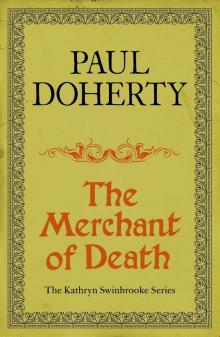 The Merchant of Death
The Merchant of Death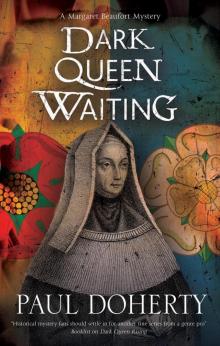 Dark Queen Waiting
Dark Queen Waiting Devil's Wolf
Devil's Wolf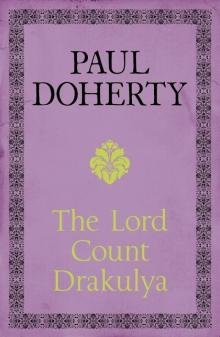 The Lord Count Drakulya
The Lord Count Drakulya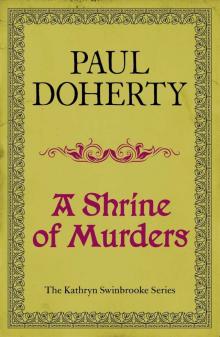 A Shrine of Murders
A Shrine of Murders The Eye of God
The Eye of God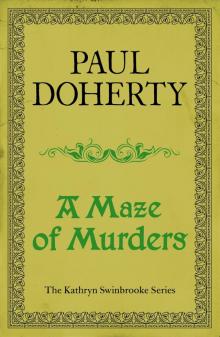 A Maze of Murders
A Maze of Murders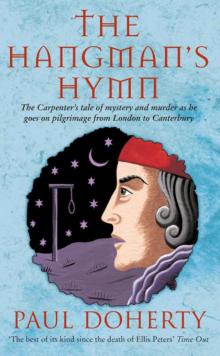 The Hangman's Hymn
The Hangman's Hymn The Godless
The Godless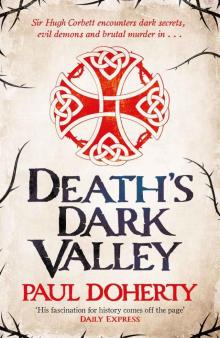 Death's Dark Valley
Death's Dark Valley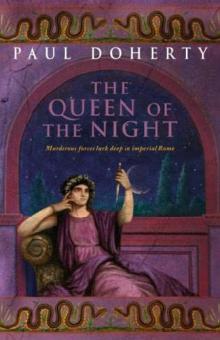 Queen of the Night ar-4
Queen of the Night ar-4 Ghostly Murders
Ghostly Murders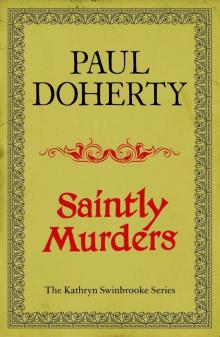 Saintly Murders
Saintly Murders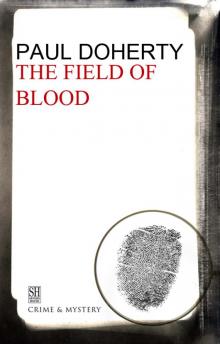 The Field of Blood
The Field of Blood Hugh Corbett 10 - The Devil's Hunt
Hugh Corbett 10 - The Devil's Hunt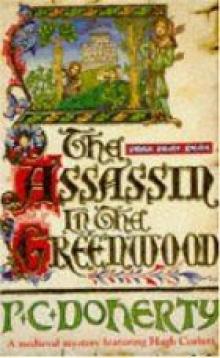 Assassin in the Greenwood hc-7
Assassin in the Greenwood hc-7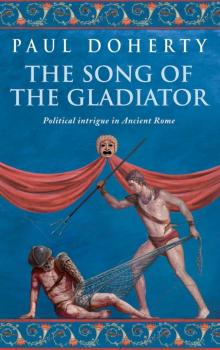 The Song of the Gladiator
The Song of the Gladiator Hugh Corbett 17 - The Mysterium
Hugh Corbett 17 - The Mysterium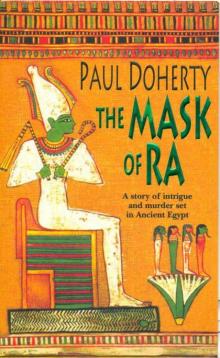 The Mask of Ra
The Mask of Ra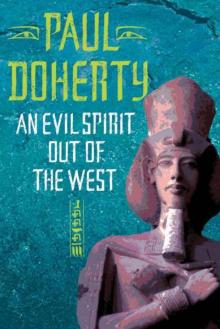 An Evil Spirit Out of the West (Ancient Egyptian Mysteries)
An Evil Spirit Out of the West (Ancient Egyptian Mysteries) Herald of Hell
Herald of Hell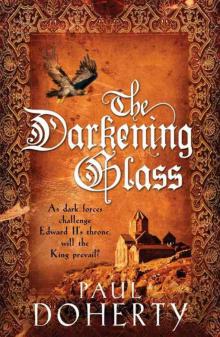 Mathild 03 - The Darkening Glass
Mathild 03 - The Darkening Glass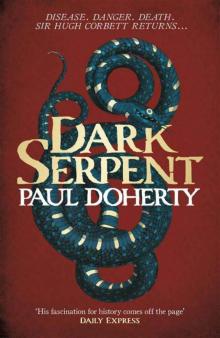 Dark Serpent (Hugh Corbett 18)
Dark Serpent (Hugh Corbett 18)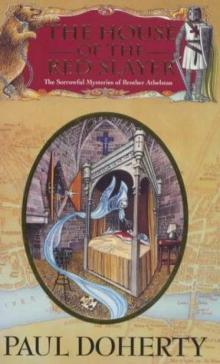 House of the Red Slayer smoba-2
House of the Red Slayer smoba-2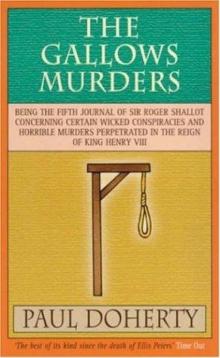 The Gallows Murders
The Gallows Murders The Straw Men
The Straw Men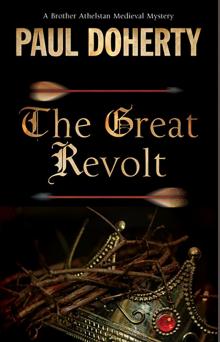 The Great Revolt
The Great Revolt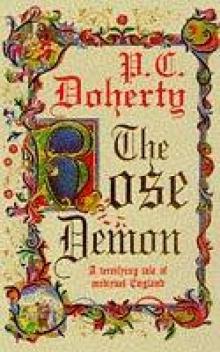 The Rose Demon
The Rose Demon By Murder's bright light smoba-5
By Murder's bright light smoba-5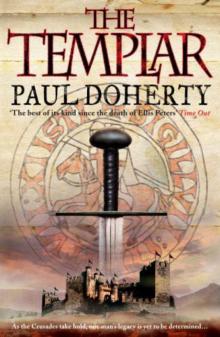 Templar
Templar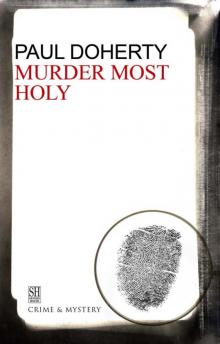 Murder Most Holy
Murder Most Holy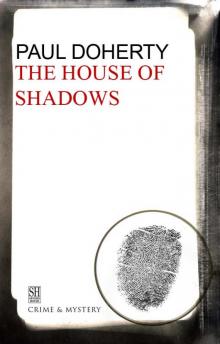 The House of Shadows
The House of Shadows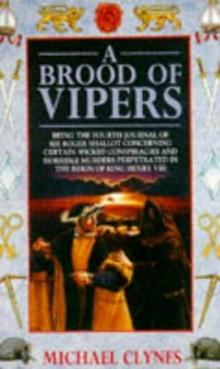 A Brood of Vipers srs-4
A Brood of Vipers srs-4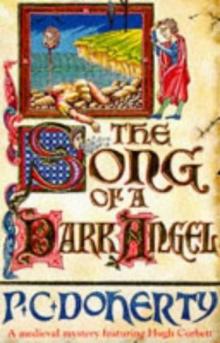 Song of a Dark Angel hc-8
Song of a Dark Angel hc-8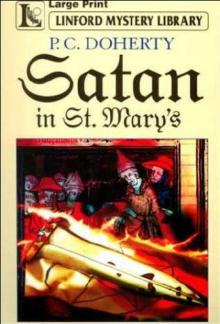 Satan in St Mary hc-1
Satan in St Mary hc-1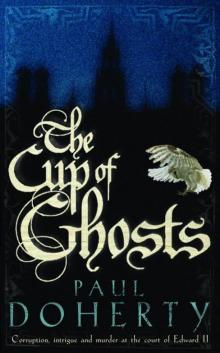 Mathilde 01 - The Cup of Ghosts
Mathilde 01 - The Cup of Ghosts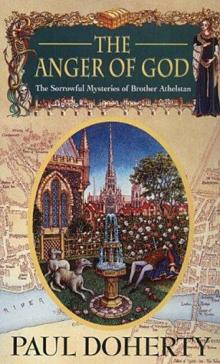 The Anger of God smoba-4
The Anger of God smoba-4 Isabella and the Strange Death of Edward II
Isabella and the Strange Death of Edward II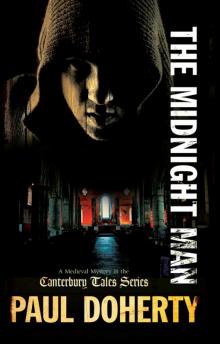 The Midnight Man ctomam-7
The Midnight Man ctomam-7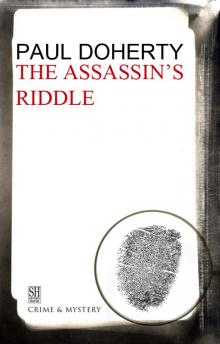 The Assassin's Riddle
The Assassin's Riddle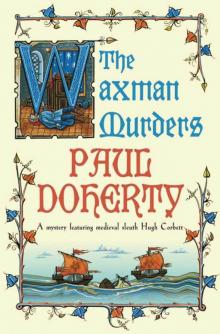 Hugh Corbett 15 - The Waxman Murders
Hugh Corbett 15 - The Waxman Murders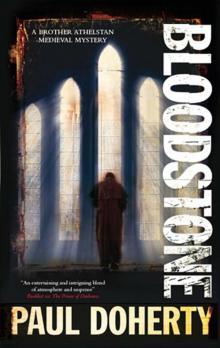 Bloodstone smoba-11
Bloodstone smoba-11 Bloodstone
Bloodstone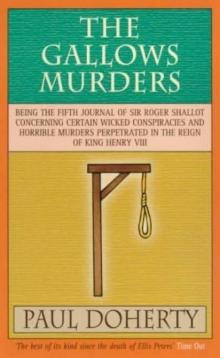 The Gallows Murders srs-5
The Gallows Murders srs-5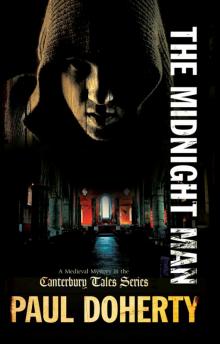 The Midnight Man
The Midnight Man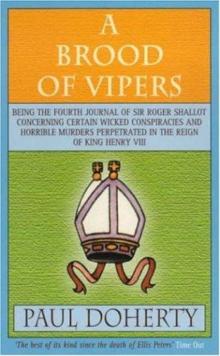 A Brood of Vipers
A Brood of Vipers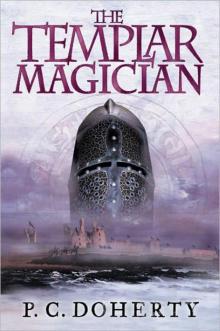 The Templar Magician
The Templar Magician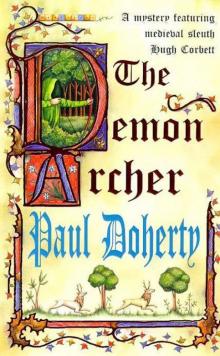 Hugh Corbett 11 - The Demon Archer
Hugh Corbett 11 - The Demon Archer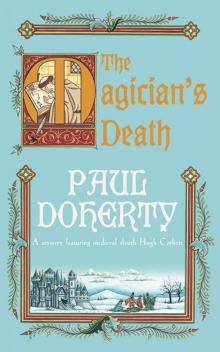 Hugh Corbett 14 - The Magician's Death
Hugh Corbett 14 - The Magician's Death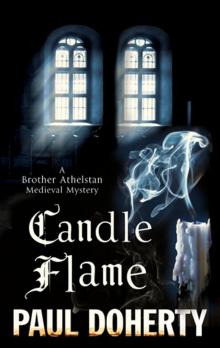 Candle Flame
Candle Flame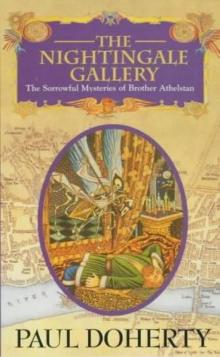 The Nightingale Gallery smoba-1
The Nightingale Gallery smoba-1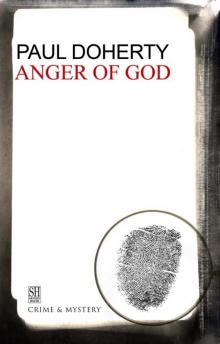 The Anger of God
The Anger of God The Book of Fires
The Book of Fires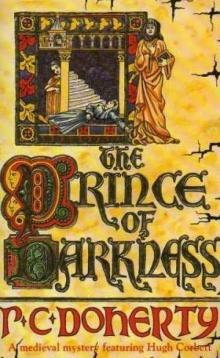 Prince of Darkness hc-5
Prince of Darkness hc-5 The House of Crows smoba-6
The House of Crows smoba-6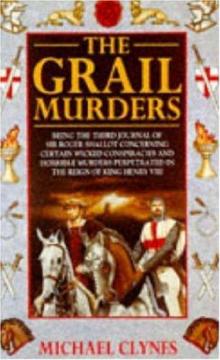 The Grail Murders
The Grail Murders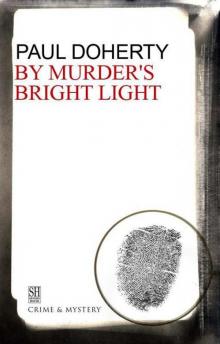 By Murder's Bright Light
By Murder's Bright Light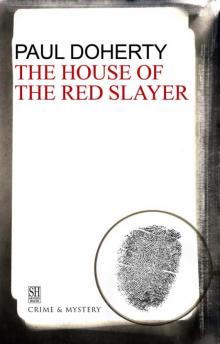 House of the Red Slayer
House of the Red Slayer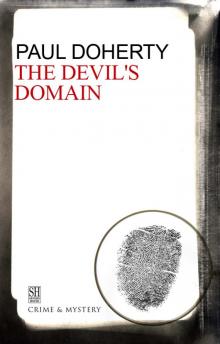 The Devil's Domain
The Devil's Domain The Relic Murders srs-6
The Relic Murders srs-6 A haunt of murder ctomam-6
A haunt of murder ctomam-6 The Straw Men smoba-12
The Straw Men smoba-12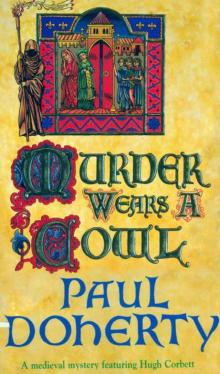 Hugh Corbett 06 - Murder Wears a Cowl
Hugh Corbett 06 - Murder Wears a Cowl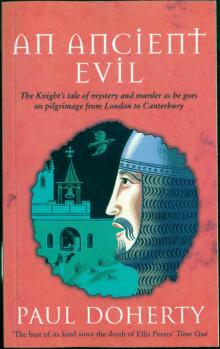 An Ancient Evil (Canterbury Tales Mysteries)
An Ancient Evil (Canterbury Tales Mysteries)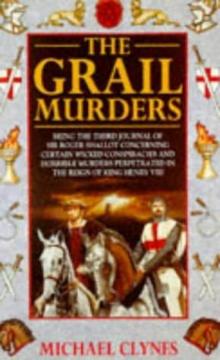 The Grail Murders srs-3
The Grail Murders srs-3 The Fate of Princes
The Fate of Princes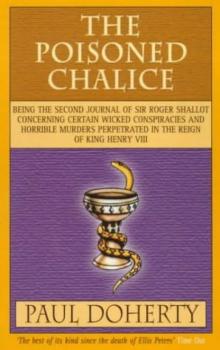 The poisoned chalice srs-2
The poisoned chalice srs-2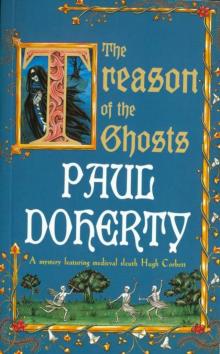 Hugh Corbett 12 - The Treason of the Ghosts
Hugh Corbett 12 - The Treason of the Ghosts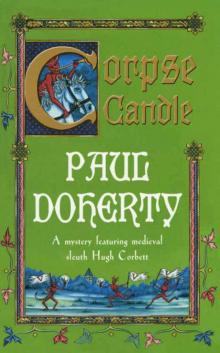 Hugh Corbett 13 - Corpse Candle
Hugh Corbett 13 - Corpse Candle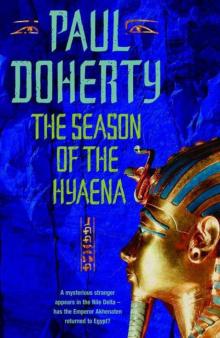 The Season of the Hyaena (Ancient Egyptian Mysteries)
The Season of the Hyaena (Ancient Egyptian Mysteries)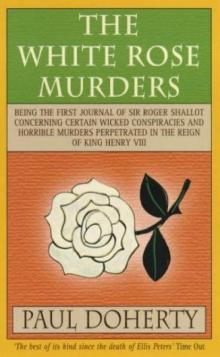 The White Rose murders srs-1
The White Rose murders srs-1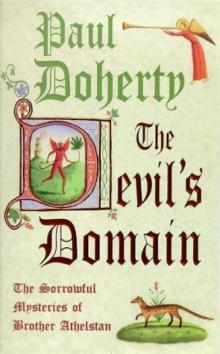 The Devil's domain smoba-8
The Devil's domain smoba-8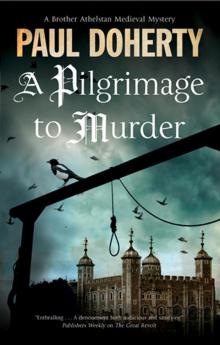 A Pilgrimage to Murder
A Pilgrimage to Murder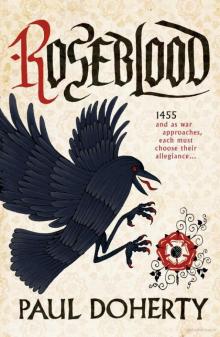 Roseblood
Roseblood The Relic Murders
The Relic Murders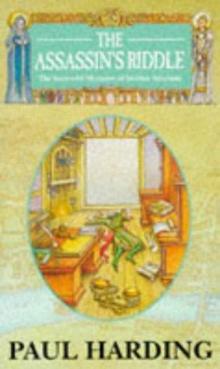 The Assassin's riddle smoba-7
The Assassin's riddle smoba-7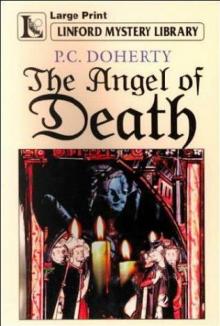 Angel of Death hc-4
Angel of Death hc-4 Dark Queen Rising
Dark Queen Rising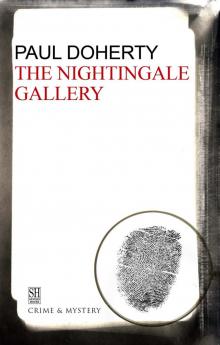 The Nightingale Gallery
The Nightingale Gallery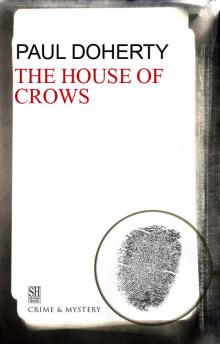 The House of Crows
The House of Crows Spy in Chancery hc-3
Spy in Chancery hc-3